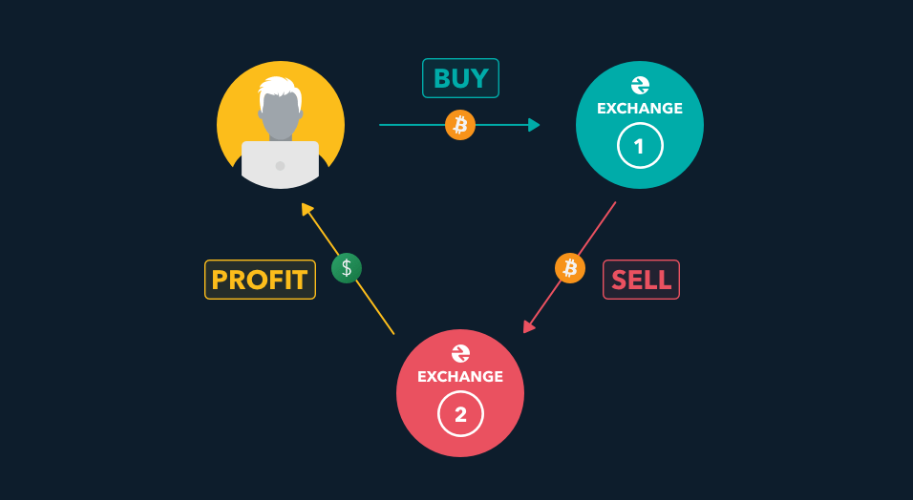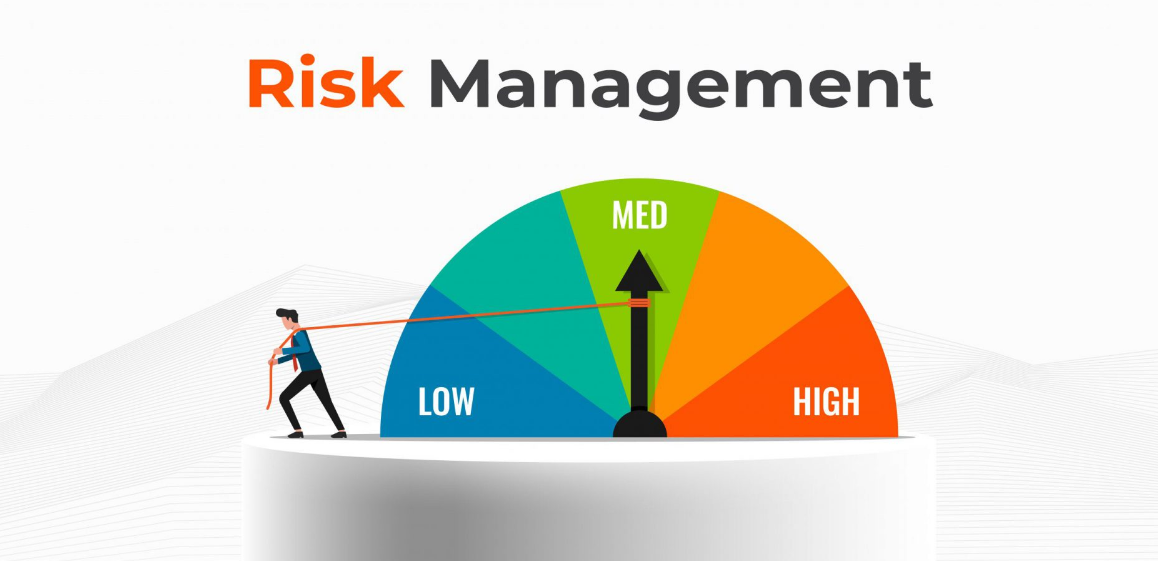
The cryptocurrency market is known for its volatility. If you want to succeed in it, you need to learn every possible analysis technique you can so that you don’t lose your investment by investing in it. Apart from the analysis techniques, there are strategies that you can implement that can help you improve your financial portfolio manifold. One such technique that has gained popularity in the crypto space is Arbitrage Trading. We will explore arbitrage trading, how it works, and why it is considered a perfect investment strategy in the crypto space.
Introduction to Crypto Arbitrage
The term arbitrage means that you are taking advantage of price differences of the same asset in different markets. In crypto trading, where prices vary significantly between different crypto exchanges, arbitrage trading becomes an exciting avenue to explore if you want to maximize your profits. The reason why prices of the same assets can vary across different exchanges can be caused by different factors such as supply and demand, market liquidity, fee structures, sentiment and news, or geographical considerations.
Now that we know the basic principle of arbitrage let’s look at how traders take advantage of the scenario where there is a price difference of the same asset across different exchanges.
The simplest explanation of how crypto traders take advantage of this investment strategy is that they buy crypto assets at a lower price from one exchange where they see that the particular crypto asset has a lower value than other exchanges in his region.
The trader then sells it at a higher price on another exchange where the asset’s price is the highest compared to other options.
Now, the simple rules of economics state that if you buy low and sell high, you profit from it. You can significantly improve your profit margins if you keep doing it consistently.
However, one important thing to note is that the success factor of implementing this strategy relies on the assumption that there are inefficiencies in the market and the information needs to spread more quickly.
We will examine market inefficiencies and how they act as a driving force in arbitrage.
Market Inefficiencies
The decentralized nature of the cryptocurrency market leads to opportunities for arbitrage traders. Additionally, the crypto market is still a new concept compared to the traditional financial market. We can have scenarios where we experience price differences of the same asset across exchanges.
Delays in updating prices across platforms, liquidity level variations, and trading volume differences create imperfections. Information spreads slowly; some exchanges have more activity than others.
Traders exploit these inefficiencies, buying low on one platform and selling high on another, profiting from temporary pricing disparities.
The Need for Speed
No, we are not talking about the famous game many of us have spent our childhood playing, and those who are lucky continue to play the newer iterations.
In crypto arbitrage, we are talking about the necessity of executing trades quicker so that those who want to maximize the returns they get on these trades can act swiftly.
The crypto market is known for its fast-paced nature, and experienced traders deploy advanced algorithms and trading bots to automate the buying and selling of these crypto assets so that they take advantage of opportunities. The success of arbitrage hinges on the trader’s ability to act quickly.
Types of Crypto Arbitrage

Crypto arbitrage has many aspects that give traders various avenues to maximize the profit of their trades. Knowing the different arbitrage strategies can make a difference between earning, for example, a $1 profit compared to a $5 profit.
Spatial Arbitrage
Spatial arbitrage is the most common form of arbitrage trading. It involves capitalizing on the price differences of the same crypto asset across different exchanges. It is governed by the factors discussed in the earlier section, such as supply and demand, liquidity, geographical location, etc.
Temporal Arbitrage
Temporal arbitrage focuses on exploiting price discrepancies that occur over time. It can be categorized into two main types: intraday and interday arbitration.
In intraday arbitrage, traders take advantage of short-term price fluctuations within a single trading day. It requires quick execution of trades to capture price differentials that may arise due to market volatility, news events, or other short-term factors.
In interday arbitrage, traders capitalize on price differences over a longer time frame, spanning days or weeks. The goal is to identify trends or patterns that lead to predictable price movements.
Cross-Exchange Arbitrage
Cross-exchange arbitrage is self-explanatory as it means that traders exploit the price variations between different exchanges as the best buying and selling opportunity.
It requires monitoring multiple exchanges simultaneously and quick execution to capitalize on fleeting opportunities.
Challenges and Risks in Crypto Arbitrage
As always, when it comes to crypto trading, there are risks you need to be aware of before you step into the crypto world. So far, we have seen different ways you can use crypto arbitrage to your benefit, making you think this is an ideal strategy option you should explore.
But, this investing method comes with challenges and risks that you should be aware of before deciding whether this is your cup of tea.
Market Liquidity
One of the primary challenges in crypto arbitrage is market liquidity. Some cryptocurrencies, particularly those with lower market capitalization, may suffer from low liquidity on certain exchanges. For example, you identify an arbitrage opportunity where you can buy a crypto asset cheaply on Exchange A and sell it for a higher price on Exchange B.
However, the same asset doesn’t have high liquidity when you try to sell on Exchange B. The low liquidity means that your large sale order significantly pushes the price down, resulting in a smaller profit than anticipated for the particular crypto asset.
Transaction Costs
Arbitrage traders must consider transaction costs, including trading, withdrawal, and deposit fees on various exchanges. These costs can significantly impact the profitability of arbitrage strategies. Traders must carefully calculate and consider these fees in their decision-making process.
For example, you see an opportunity to exploit a price difference between Ethereum and Tether (USDT) across two exchanges. However, after factoring in both platforms’ trading fees, withdrawal, and deposit fees, the profit margin becomes negligible, barely justifying the effort.
Regulatory Considerations
The regulatory environment surrounding cryptocurrencies is still evolving. Therefore, traders engaging in arbitrage must navigate the legal complexities associated with cross-border trading, taxation, and compliance with local regulations. Failure to do so can result in legal consequences and financial penalties.
Price Corrections
Cryptocurrency markets are known for their volatility, and prices can correct rapidly. Traders executing arbitrage must be prepared for sudden market shifts that can completely wipe out the profits they can potentially make.
Implementing risk management strategies, such as setting stop-loss orders, is crucial to limit losses in adverse price movements.
Crypto Arbitrage Strategies Comparison
| Feature | Spatial Arbitrage | Temporal Arbitrage | Cross-Exchange Arbitrage |
| Exploited Price Difference | Location | Short-term fluctuations | Between platforms |
| Example | Buy low in Korea, sell high in US (Bitcoin) | Buy dips, sell rebounds (volatile altcoins) | Buy cheap on A, sell expensive on B (USDT) |
| Execution Requirements | Fees, Regulations, Fast transfers | Volatility, Timing, Holding costs | Liquidity, Speed, Technical issues |
| Challenges | Unexpected price shifts, security | Market movements, Missed opportunities | Delays, downtime, regulations |
| Risks | Major Coins, Stablecoins | Volatile Altcoins | All kinds of correlated pairs |
| Commonly Traded Assets | Moderate-high (logistics) | Low-moderate (timing) | Moderate-high (technical) |
| Complexity | Location | Short-term fluctuations | Between platforms |
Best Practices for Successful Crypto Arbitrage

Now that we have learned about the possible challenges associated with arbitrage, we can now look at how we can avoid facing any difficulties from them or even face such challenges head-on. Traders who are bold enough to explore these avenues know that there are specific methods they can implement to gain maximum benefits of arbitrage trading.
Risk Management
Time and time again, we have asked our readers to implement the necessary risk management techniques to avoid sustaining any significant financial loss.
When it comes to arbitrage, the essential risk management techniques that you should plan for include setting a risk tolerance level so that you know how much you can afford to lose if you find yourself in situations where your trades are going at a loss.
Set loss orders before or after you execute the trade so that you don’t get caught in any market turmoil and save yourself from losing more than you can afford.
Prepare in advance to tackle any market fluctuations that come your way. By following these steps, you can minimize your losses. It will give you enough confidence and financial backup to stay in the game.
Remember, you cannot win all the trading scenarios. Still, if you follow proper risk management techniques, your losses will always be less than your profits, and you will have more chances to recover any short-term losses you have incurred.
Utilize Technology and Automation
Trading bots are tools that take a predefined set of parameters set by traders or investors and execute those trades when these specific parameters are met.
No one expects you to remain glued to your mobile or laptop screens 24/7 and focus on every possible avenue to find profitable trades.
Sometimes, you need to get the help of technology and ask it to do the grunt work for you so you can spend time on more productive tasks like planning for your next trading adventure.
Utilize the services of advanced trading bots and algorithms to automate the execution of your trades. These tools can analyze market data, identify arbitrage opportunities, and execute trades at speeds that are difficult to mirror in manual trading.
You can also use data analytics tools to help your cause of executing profitable trades. These tools analyze vast datasets, offering a comprehensive view of cryptocurrency prices, trading volumes, and market sentiment.
By leveraging data analytics, traders gain a competitive edge, allowing them to stay ahead of market movements and identify potential arbitrage opportunities.
Monitor the Market Trends
Keeping up to date with the ongoing trends of the crypto market is a trait you must have because, on several occasions, you can avoid sustaining losses just by analyzing the market’s overall sentiment and pulling out of the market at a reasonable time.
Follow different crypto-related news websites, channels, or blogs so that you can get a general idea of not only how the market is performing, but by getting information about the ongoing political and economic climate, you can also analyze what specific real-world scenarios can create an impact on the crypto market.
By utilizing this strategy, you can gauge the current profitability of the market and execute your plans accordingly.
Learn from Historical Arbitrage Trades
Analyze real-world examples of successful and unsuccessful arbitrage trades. Understanding historical scenarios can provide valuable insights into the dynamics of crypto markets and help refine your trading strategy.
Case studies can offer practical lessons on timing, execution, and risk management. If you follow any crypto influencers who have mentioned using crypto arbitrage, you can ask them about their experience and learn from what they have to teach, provided they are willing to share their wisdom with you.
Conclusion
In conclusion, crypto arbitrage offers lucrative opportunities but demands a disciplined and well-informed approach.
By understanding the different types of arbitrage, recognizing the challenges, and implementing effective strategies, traders can navigate this dynamic market successfully.
Remember that the crypto landscape is continually evolving, and adapting your approach to changing market conditions is vital to long-term success in arbitrage trading.
Note: This article aims to inform you of possible investment opportunities in the crypto space. We are not encouraging you to follow our lead and start using arbitrage trading in the crypto world. Do your due diligence and learn about all the risks associated with crypto trading.




